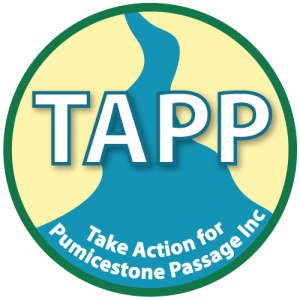Naomi Soustal, Healthy Land and Water
David Moffat, Department of Environment and Science
David Moffatt is a Principle Environmental Officer at the Department of Environment and Science with twenty-five years’ experience in the design, establishment and delivery of major field-based research and monitoring projects. David specialises in; water quality, aquatic ecology, fish and fisheries biology and ecology; ecological assessment of freshwater, estuarine and marine ecosystems; and field research logistics and statistical analysis of ecological data. David holds a degree and post-graduate qualifications in Aquatic Ecology from the University of Queensland.
Naomi Soustal is an Environmental Scientist working with stakeholders to support water quality monitoring, research, and management effort across South East Queensland. Naomi coordinates the preparation of the Healthy Land and Water Report Card to communicate the social, economic and environmental drivers and pressures on water quality to encourage investment in catchment management and stewardship activities. Naomi has over 18 years’ experience in science communication, water quality monitoring, catchment management, citizen science and education for sustainability underpinned by qualifications in Ecology and Environmental Science and Natural Resource Management.
Abstract:
The Healthy Land and Water Report Card is a tool used to communicate the condition of south east Queensland’s waterways to stakeholders. It provides a high level summary assessment of freshwater, estuarine and marine waterways based on social, economic and environmental indicators. An Environmental Condition Grade (A-F) and Benefit (social and economic) of Waterways Rating (1-5 stars) is assigned to each catchment based on data collected throughout the year. Pumicestone Passage has performed well these past 5 years with grades ranging between B- to A- and ratings of 4.0 to 4.5 since 2015. However, in 2010 the water quality in the estuary dropped to its lowest grade of D+1 instigating the preparation of the Pumicestone Passage Catchment and Action Plan (2013-2016)2. Implementation of the plan appears to have maintained water quality, with some improvements, despite increased population and development pressues. However, detailed analysis of the data indicates that there are still water quality issues occurring within the catchment and estuary. Pollutant loads (nutrients and sediment) generated from the catchment, particularly during rainfall events, as well as habitat (seagrass, wetlands and riparian) pressure and elevated ammonia and dissolved forms of nitrogen (NOx) have been recorded. These results, as well as the need for ongoing adequate catchment monitoring and management to ensure Pumicestone Passage continues to support the communities high recreational use, cultural and economic value and sensitive ecosystem health; will be explored during this presentation.
